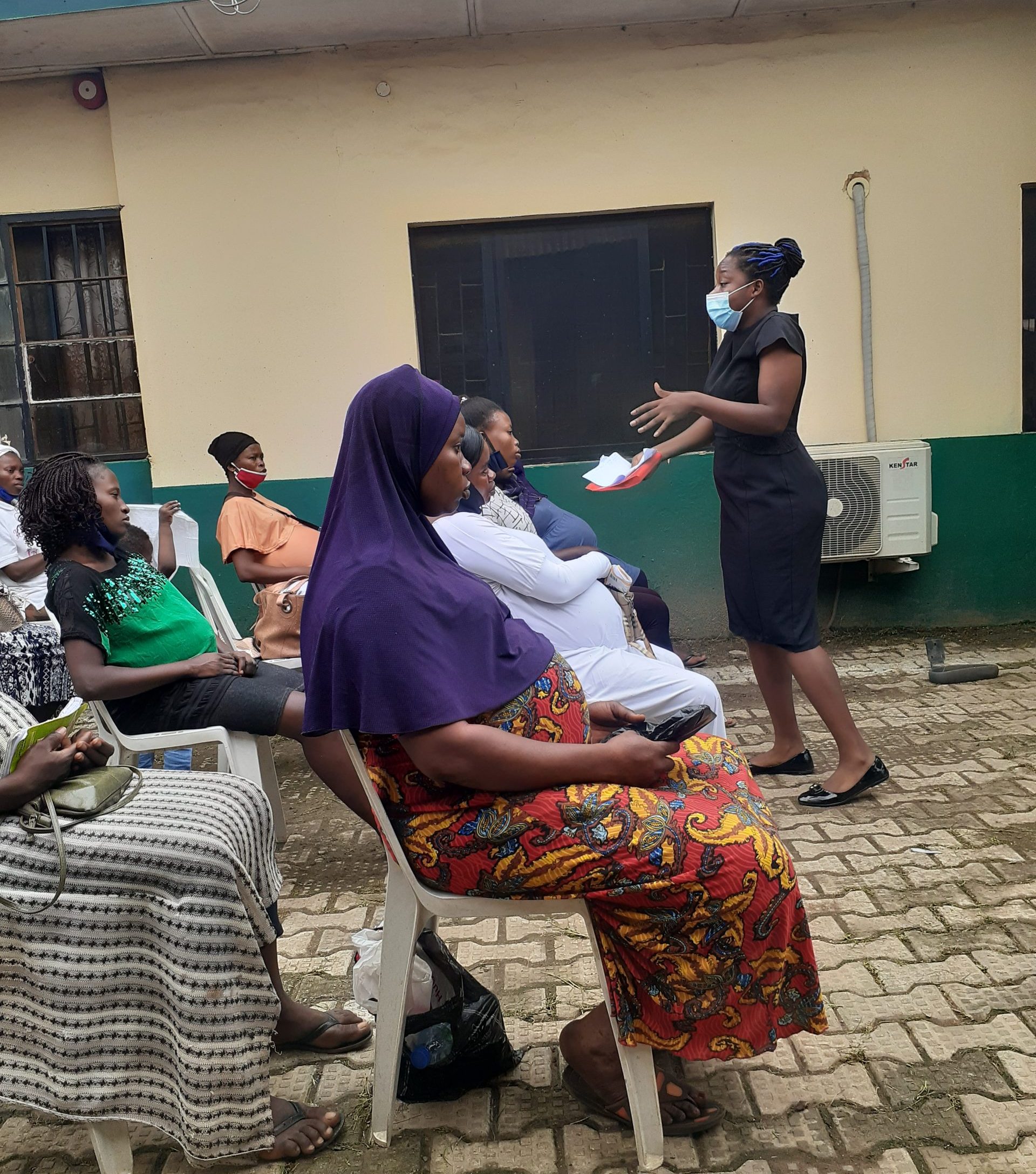You must have previously heard about “World Heart Day“, or “World Tuberculosis Day”, or even “World Health Day” as a whole. How about the “World Patient Safety Day”? Of course, it doesn’t exactly ring a bell, but then, don’t stop reading; because by the time you are done, you’d be sufficiently acquainted with what it entails, and how it affects you as an individual.
The World Patient Safety Day (WPSD) is celebrated annually on the 17th of September. The WPSD was established in May 2019 during the 72nd World Health Assembly and adopted as resolution 72.6 which was centered on “Global action on patient safety” and was a culmination of a series of campaigns initiated in 2016.
Patient safety emerged as a health care discipline due to evolving complexities of health care systems and the increase in number of cases of patient harm in health care facilities, where it is reported that one in ten patients is harmed while receiving hospital care. This is according to a 2017 paper by Luke Slawomirski et al. Hence, since the passage of resolution 72.6 in 2019, the WPSD has become one of the days marked by the World Health Organization for health advocacy.
The WPSD each year has a dedicated theme of which in 2019, it was tagged “Patient Safety: A Global Health Priority” aiming to promote open communication for healthcare workers to learn from previous errors and to also emphasize that patient care remained the utmost priority. In 2020, the spotlight was on health worker safety as the theme dedicated for WPSD 2020 was “Health Worker Safety: A Priority for Patient Safety”. The slogan summarizes it with the action call being “Speak up for health worker safety!”. In 2021, the WHO reiterates the need for improved maternal and newborn care, with the theme “Safe and Respectful Maternal and Newborn Care”. This day has a signature mark of lighting up public places and other areas of public health interest with the colour orange, in collaboration with the local authorities.
Around the world, about 810 women die daily from preventable pregnancy-related and childbirth causes. Hence, for World Patient Safety Day – Friday 17 September 2021 – globally, WHO urged all stakeholders to “Act now for safe and respectful childbirth!”.
The Need: Why Is Patient Safety Advocated For?
If sound health were a commodity that could be traded, I bet people of this world sitting in the wealthiest places would enjoy good health for as long as they could, and even people of lower social status would do all they can to get it. At least, people strive to obtain the necessities of life and living, hence, if sound health can also be bought with money, they would. Alas, this cannot be. Therefore, good health is to be guarded jealously. However, at some point the body would eventually fall to the constant daily pressures it’s subjected to, as well as it’s exposure to several harmful substances. For instance, even sitting in one position for long isn’t advised and we all have to face the sad reality that we’d seek health care at one point or the other in our lives.
Conversely, how sad it would be, that while you present to the hospital for a particular symptom and complaint, and obtaining applicable treatment, you come down with another different disease – the so-called “nosocomial infections” or “hospital-acquired infections”, which according to JL Fraser in 2020 has a prevalence of 3-15% in Africa. This and more promoted the resolution passed by the 72nd assembly of the WHA in 2019, where they emphasized that patient safety remained a health priority of health sector policies and programs, and thus needs to be an essential component for strengthening health care systems as the bid to achieve universal health coverage continues.
Patient Safety In Nigeria: Where we are now?
‘’Doctors and Nurses are the real Robbin hood, as they ‘steal’ cotton wool, plaster, and even syringes from patient A, to serve patient B.’’
The above is a common “joke” in healthcare circles in Nigeria. From my own experience, it is even “borrow” that’s used, but this “debt”’ is almost always unpaid. Another scenario that plays would be at night, while walking on the wards of public hospitals, you’d see about 5-6 people rolled up on mats, circled with pots, other cooking items, personal effects and it wouldn’t take long for you to figure out that it was the “shack” where most patients relatives “hang around” while caring for and supporting a loved one on admission.
They could stay there for a period of at least 1 week to as long as 3-6 months. This enables an unhealthy environment first to themselves, and then to their loved ones, other sick people and their relatives, and also healthcare providers. This situation is very sad, and it is not their fault. Really, what can they do? The hospitals do not make provisions for patient’s relatives and as such, they have to make do with what they can.
What about the emergency rooms (ERs) of hospitals? Hardly does it fulfill the criteria for how standard ERs should look like and function. It is almost always rowdy and chaotic. Sometimes, bed spaces aren’t available and sick people are sometimes attended to on the floor, or makeshift options are used. Like, when a man had a fracture and a carton was opened up and used as a splint. I’m sure while reading this, either as a health worker or not, you’d be able to recall other experiences that you have witnessed.
As the WPSD theme for 2021 focuses on maternal and newborn health, I am drawn to touch on the prominent “three delays” contributing to maternal mortality; where in phase I, there is a delay in the decision to seek care, in phase II, there’s a delay in reaching the health care facility, and in phase III, there is a delay in the provision of adequate health care. These delays are interwoven and affect different people at different times in different places, and the origin of these delays can be hinged on administrative bottlenecks, both at the level of the government and the hospital board. Although, the former affects the latter on the long run.
For example, when there’s the unavailability of cotton wool in the ER – or “ordinary cotton wool” as it’s usually dubbed – and the complaints get to the door of ER Head, he/she also transfers the blame and claims there’s “no money” to order new stock. When the train gets to the hospital board, they sing the same song and blame the next “Oga at the top” till it gets to the “Oga” who probably doesn’t care, as long as he or she can easily hop on the next available flight to “the abroad” just to get their ears cleaned.
But sadly, in that ER, a patient dies simply because there’s no oxygen. The doctor has to do a digital rectal exam with his or her hands “lubricated with water” because there’s no lubricating gel. Sometimes, he or she is not even able to do anything because gloves are unavailable. The neurosurgeon after trying all of his best to stabilize the head-injured patient brought to his ER – because there was no neurosurgeon in the nearest hospital to the crash – gets a call that his patient has died on the way to getting a head CT scan, and that is because the CT machine in the hospital is “dead” more times than it works. Or is it these days of the pandemic where facemasks are scarce and a doctor is expected to use just two gloves for a week? Or the patient who can only afford the “cloth” mask?
It is this bad, showing how very much patient safety in Nigeria is handled with kid gloves, and that the Nigerian patient is very unsafe.
Patient Safety In Nigeria: Where Do We Go From Here?
As much as rocket science is difficult, it has been tackled. Thankfully, the problem of patient safety in Nigeria is not rocket science, hence can be easily sorted out if people at different levels get to do their jobs. I have always believed that things would work generally in Nigeria if everybody gets to play their parts and play them well. The government of the day has to hit the realization that healthcare is very, very, and again, very important. If there are funds available with effective monitoring/evaluation, hospitals won’t run out of “ordinary cotton wool” or “ordinary gloves” and Doctors won’t have to rob Peter to treat Paul. Likewise, If healthcare at primary and secondary levels are adequately revamped, the ‘’pressure’’ on tertiary centers would be lessened.
These are just a few of the myriads of solutions the Nigerian healthcare could benefit from. Otherwise, patients would continue to remain unsafe, constituting risks to healthcare providers – who also end up becoming unsafe patients and the circle continues.
For now, for always – patient safety remains a global health priority.

About Author:
Oluwatobi Ogunlade is a Civic Leader, and Medical Doctor in training, with interests in Tech and Adolescent Mental Health. He is a firm believer that “changing the world requires taking one right step at a time”. He is a former Nigerian Medical Students’ Association (NiMSA) Regional Coordinator for NiMSA Southwest. He is an avid reader and writer, freelancer, amateur guitarist, Chelsea FC of England fan, and learns how to code/Website Development at night.



Discussion1 Comment
Thank you very much for sharing, I learned a lot from your article. Very cool. Thanks. nimabi